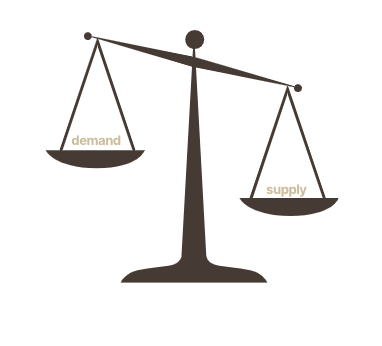Supply and Demand
Ever wondered how market prices for goods are determined? The law of supply and demand is an economic principle explaining the relationship between supply, demand, and price. This relationship can be seen in everyday life, such as when a classmate opens a pack of gum and people are ready to trade anything for a piece. The more limited something is, the more people typically want it. The law of demand states that as the price of a product increases, the demand will decrease. The law of supply dictates that as the price of a product increases, the supply will increase as well. These work in combination to determine the actual market price and volume of goods.
Supply and Demand Curve
Essentially, an increase in demand or decrease in supply results in a higher price of the product, while a decrease in demand or increase in supply results in a lower price of the product. Hype-based business models like Nike and Supreme utilize scarcity to bypass both the law of supply and the law of demand. By producing a fixed amount of products, a company like Nike ensures a prospering reselling market for their products while maintaining hype. As the price increases, these companies don’t increase supply to match it. They also don’t abide by the law of demand, and when they increase their prices, the demand surrounding the products actually increases!
This basic principle of economics has many applications in everyday life, and in more complex understandings of the market. Though it’s not fully compatible with all businesses, it’s generally an accurate representation of how companies determine pricing.

